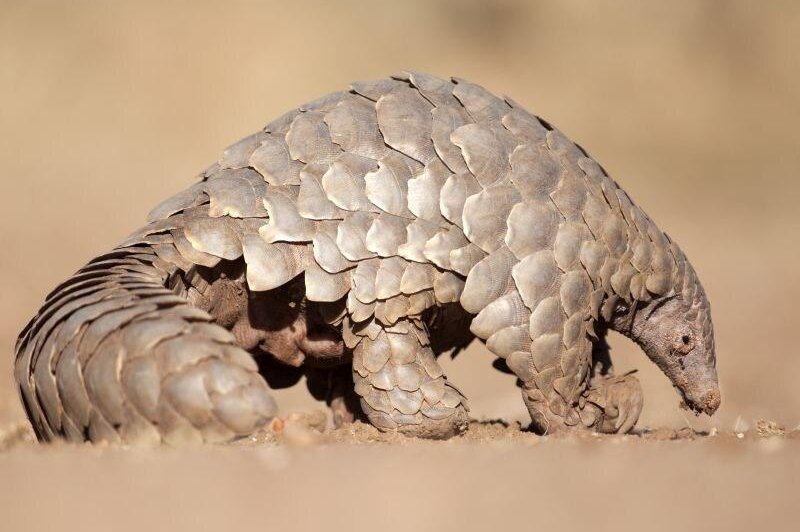Scientists find ‘breakthrough’ malaria microbe that can stop disease spread
Study finds microbe that stops mosquitoes carrying disease

A worker fumigates against the Aedes aegypti mosquito
in a neighbourhood in Panama City. AFP
A microbe found in mosquitoes could stop them from becoming malaria carriers and might offer a way to halt the spread of the disease to humans, researchers in Kenya and the UK have found.
A study published this week in the Nature Communications journal said the microbe offered “enormous potential” for controlling the disease, which kills about 400,000 people every year.
The microbe, Microsporidia MB, was found in mosquitoes on the shores of Lake Victoria in Kenya. While such microbes are common in mosquitos they can often harm or weaken the insects but some offer benefits creating a symbiotic relationship with their host.
Researchers studied the mosquitoes in the area and found many carried Microsporidia MB but were otherwise “very healthy” and so began to study the impact of this on the creatures.
Those carrying the microbe were found to be immune to contracting the malaria virus.
Dr Jeremy Herren, from the International Centre of Insect Physiology and Ecology in Kenya who led the study, said the data suggests 100 per cent blockage of malaria.
“It's super promising at this stage, I've got no reason not to believe we can do something but of course there's still a lot of hurdles,” he told The National.
“I really think this has huge potential, but this is not an easy disease – it’s something we've been dealing with since the dawn of mankind and it's almost a bit strange to think that we'll be the generation that gets rid of it,” he added.
While the microbe interrupts the transition of malaria, Dr Herren said this wasn’t as important as the fact that it didn’t harm the mosquitos and they were passing it on to their offspring, potentially offering a way to halt the spread of malaria for good.
“I think there are many microbes which have the potential to interfere with the process of becoming infected with malaria for a mosquito, but there's probably very few that have the right characteristics to be useful in terms of a control strategy,” he said. “The breakthrough here is that it's also spread from mother to offspring. It also doesn't make the mosquitoes sick. So, it has all the characteristics which would allow us to potentially spread it through the mosquito population, and for it to be maintained in that mosquito population. So, I think altogether, those things are quite a big breakthrough.”
The next big challenge will be working out exactly how to spread Microsporidia MB through the general mosquito population.
The researchers said that at least 40 per cent of all mosquitoes in a region would likely need to be infected with Microsporidia MB to reduce malaria infections in humans.
The first possible way, Dr Herren explained, is to physically spread Microsporidia MB in the environment early in the annual cycle before rains lead to a population boom. Infecting the small more concentrated population before the rains would lead the offspring to carry Microsporidia and spread it across the whole swarm.
The second wave is through releasing infected male mosquitos.
“So, we could just mass rear mosquitoes and only release males because males can't transmit disease [like malaria], they pose no threat to anyone, you'd be able to release them on mass and they would then infect females [with Microsporidia MB]. And then females would, again, infect their offspring and sort of that cycle continues. So, so it does lend itself to a few different ways of potentially disseminating it in a way that's kind of economically and feasibly viable,” he said.
For now, they plan to conduct more tests and studies in Kenya to get a better understanding of how the microbe could be spread among mosquitoes. The other thing that they need to determine is quite how many generations of mosquito can continue to pass on Microsporidia MB – the more generations that are carriers the more viable this is as a malaria control method.
The next phase, he said, is to release a group of males carrying Microsporidia MB into a controlled mosquito cage to see how they then spread that through the population.
“And we'll be working quite closely with modelling teams to understand, okay, we've got a 50 square kilometre island here that has malaria, how many mosquitoes would we have to release? And what level of infection [of Microsporidia MB] do we need to protect this area of land from malaria transmission? So, it's really all about dissemination now - how can we get it out there and how would it be feasible to get it out there. What are we talking in terms of costs, what are we talking about in terms of longevity of protection, and those sorts of things,” he said.
But funding will now dictate the timeline for Dr Herrey and his team.
“The timelines are quite unpredictable,” he said. “The funding also is really a key thing - I know exactly what we have to do if we have… the resources. If we can get some good investment projects, we can really push things a lot faster.”
Another thing that gives Dr Herrey hope that this is a viable area to explore is that a similar method shows signs of stopping the spread of Dengue fever.
He said that the release of Wolbachia bacterium infected mosquitos is already proving to cause a “significant decline” in areas of the tropical disease that causes headaches, vomiting, fever and infects millions a year while killing thousands.
While there are Malaria drugs available that help to stop infections, they can be expensive, not 100 per cent effective and often come with significant side effects.
Mosquito nets and repellents are also widely used to try to prevent bites in the first place.
Over the last 15 years, huge insecticide programmes in at-risk countries have helped to bring the number of global cases down by 40 per cent.
The study said that these control measures “are insufficient and additional novel strategies are needed if we are to make further inroads in reducing malaria incidence”.














